Go nuts!
Just as home grown fruit and veges offer savings, convenience and monumental health benefits, so it is with nuts. They’re a concentrated source of protein and energy, packed with minerals, vitamins and cancer-fighting anti-oxidants, especially if they’re home grown. The very word ‘nut’ comes from the word ‘nutrient’.
You may only have space for one kind of nut, but the good news is that nut trees give us more than just nuts. They also provide shade, shelter and beauty.
Autumn and Winter are a great time to plant them.
ALMONDS
An almond tree is an ideal nut option for the home garden. Closely related to peaches and apricots the almond is a pretty tree with spring blossom, and it doesn’t grow huge like a walnut tree. But like walnuts, almonds are celebrated among health foods, warding off heart disease and lowering cholesterol.
Almonds trees grow and fruit well where there are warm dry summers without heavy spring frosts. Frost is a problem if it happens when trees are in blossom.
While most stone fruit benefit from a stiff winter chill, some are not so fussy. Almond ‘All-In-One’ is a popular self-fertile variety that will yield heavy crops after a relatively mild winter. This tree will grow about 4.5m tall.
Dwarf Almond, ‘Garden Prince’ grows no higher than 3m tall and wide, ideal for a small garden, courtyard or large container. It is also a low chill variety well suited to drier northern areas of the country. ‘Garden Prince’ is self-fertile with beautiful pink spring blossom followed by medium sized sweet nuts enclosed in soft shells.
There are many other excellent Almond varieties, but most are not self-fertile so it is important to plant at least two varieties to ensure cross-pollination.
CHESTNUTS
Chestnuts are low in fat (unusual among nuts) but high in starch and protein and are mainly eaten boiled or roasted. They can also be pureed or processed into flour.
Chestnuts are big spreading deciduous trees best for large gardens in dry climates with cold winters.
HAZELNUTS
Hazelnuts are ideal for the home garden lacking space for large trees. They can also be grown as a hedge. Hazelnuts thrive where apple trees grow well. They’re best in fertile well-drained soil with some summer moisture and shelter from harsh winds, and are most productive after a cold winter, although some do have lower chill requirements than others.
In gardens hazelnuts make attractive shrubs or small trees adorned with pretty catkins (male flowers) in winter and early spring. Left untamed they’ll grow naturally into a large multi-branched shrub (3 to 4m tall). Alternatively you can train them as a small tree by pruning the young plants to remove all but a single leader trunk to the desired height. To grow a hazelnut hedge1.5-3m tall, plant trees 60-90cm apart. Trim in early spring, taking care to leave some catkins and female flowers. Hazel hedges have been a feature of the English landscape for hundreds of years.
Because hazelnuts have both male and female flowers borne at different times, at least two plants of specific varieties must be planted together to ensure pollination. For a good list of varieties and their pollinators go to www.waimea.co.nz or www.hazelnut.org.nz
MACADAMIA NUTS
This is the nut tree for warm sub-tropical regions. Macadamia is an Australian native which is grown commercially mainly in Hawaii. It thrives in warm, frost free climates with well-drained soil and a healthy rainfall. Shelter from strong winds is important. If citrus grows well in your garden a macadamia tree will too. They’ll tolerate light frosts (-3°C) once established. Protect young trees from frost with frost cloth or by wrapping trunks in cardboard.
The nuts are borne in cone-shaped clusters and are very high in fat. No wonder they taste so good! Nuts ripen between July and November, depending on variety. In spring a beautiful rich fragrance is released from cascades of hanging pink or white flowers. Macadamias are tall evergreen trees. Plant at least two varieties to ensure cross-pollination.
PEANUTS
If you have room to grow peas in your garden, you have room for peanuts. Peanuts are legumes but, unlike peas and beans, they have a quirky way of growing. After flowering, the pods bury themselves in the ground for ripening.
Seeds and seedlings are available in spring. They need at least four months of frost-free weather in a sunny position with very loose, well-drained soil that’s rich in compost. As the plants grow, the soil can be mounded up around the plants to support them.
WALNUTS
The Persian walnut (Juglans regia) is a majestic long-living tree of oak-like proportions and makes a beautiful shade tree in a large garden, even without nuts. They thrive in climates with cool winters and hot summers. One mature tree can provide nuts to last you a year.
Trees are usually grown from seed, so there is some variation between trees. Grafted trees of specific varieties are not so commonly available and more expensive due to the time and skill required in producing them. Nut production is best when there is another walnut tree in the neighbourhood, but pollen will travel a long way in the wind.
Walnuts rate highly among health foods with amazing healing properties. They’re packed with Omega-3s and anti-oxidants, good for the heart, liver, kidneys and digestive system.
OTHER NUTS
In case you are wondering, some nuts are hard to grow in NZ gardens. NZ is not quite tropical enough to grow cashew or brazil nuts. Pistachios need a very cold winter and a hot dry summer. They thrive in the Middle East and in California. Pecan nuts are borne on huge spreading trees and you need two of them for successful nut production, hence they’re not often seen in home gardens. In NZ the trees are currently in short supply.
Pine nuts are delicious, but they are the priciest nuts of all. This is because extracting the kernels from their cones is hugely labour intensive. In NZ they are grown commercially in Marlborough, but mainly imported from China. If you adore pine nuts and can’t bear to pay the price, you can grow your own. Pine nut trees are available from your garden centre. They’re not difficult to grow, but you will need space and patience.

9-Apr-2018
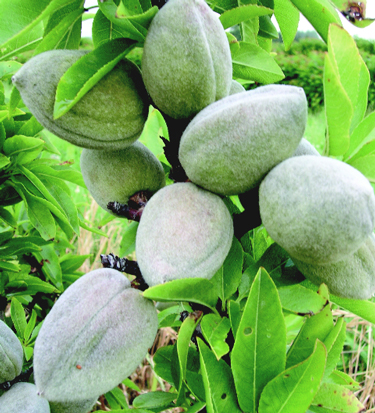
Almond Garden Prince
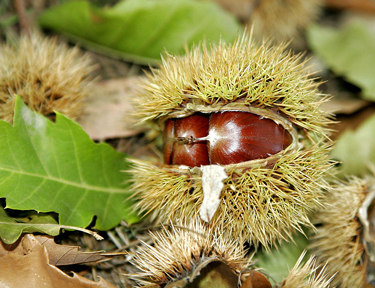
Chestnut
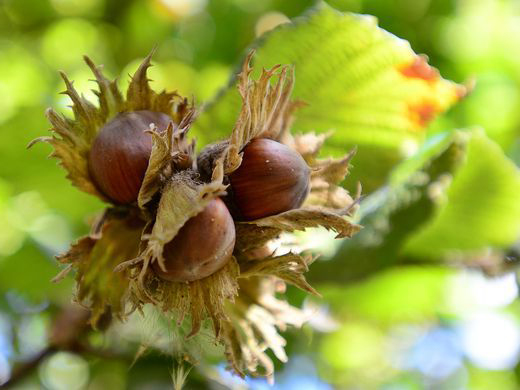
Hazelnut
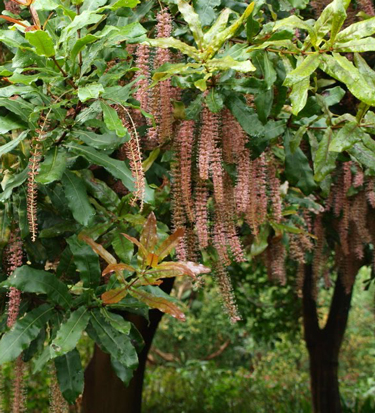
Macadamia in flower
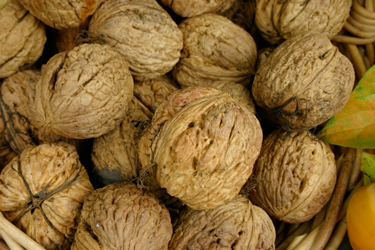
Walnuts

